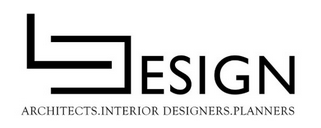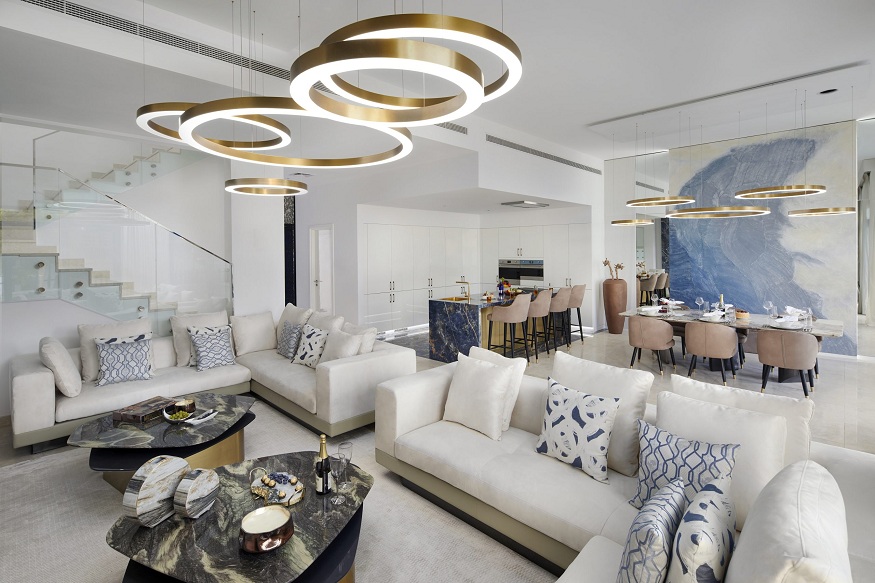Luxury interior design has long been associated with opulence, grandeur, and indulgence. However, a noticeable shift is taking place in the world of high-end interiors. Today’s luxury interior designers are increasingly integrating eco-friendly materials into their projects. Sustainability is no longer a niche concern—it has become a core aspect of sophisticated design. From reclaimed wood to low-impact fabrics, designers are finding ways to maintain elegance while reducing environmental impact. The result is homes that are not only visually stunning but also socially responsible.
The push for sustainable luxury is being driven by a growing awareness among clients. Many high-net-worth individuals now seek interiors that reflect their values, including environmental responsibility. They are willing to invest in premium materials that are responsibly sourced. This has led to a rise in the use of organic textiles, recycled metals, and sustainably harvested timber. In Dubai, interior companies in Dubai are leading the way by offering bespoke solutions that merge eco-consciousness with uncompromising luxury. The trend demonstrates that sustainability and indulgence can coexist harmoniously.
The Rise of Eco-Friendly Materials in Luxury Interiors
One of the most significant changes in modern luxury interiors is the use of eco-friendly materials. Reclaimed wood is a prime example. It not only reduces the need for new timber but also adds character to a space. Each piece carries a story, providing warmth and texture that new materials often lack. Bamboo has also become a favourite. Fast-growing and highly renewable, bamboo offers versatility for flooring, furniture, and decorative panels.
In addition to wood, designers are turning to recycled metals, glass, and even stone. These materials reduce waste while allowing for creative, high-end finishes. They are perfect for clients who desire luxury without contributing to environmental degradation. Designers now balance aesthetics with responsibility, ensuring that every material chosen supports sustainability goals. This approach is redefining the very notion of luxury, making it synonymous with mindfulness and innovation.
Sustainable Textiles and Fabrics
Textiles play a crucial role in luxury interiors. Traditionally, they have been one of the least sustainable elements, with synthetic fibres contributing to pollution. Today, designers are opting for organic cotton, linen, and hemp. These materials are naturally biodegradable, require less water, and are free from harmful chemicals. The tactile quality of these fabrics enhances the sensory experience of luxury while remaining eco-conscious.
Recycled fabrics are also gaining popularity. Designers are transforming old textiles into luxurious upholstery, curtains, and rugs. This not only extends the life cycle of materials but also offers unique patterns and textures that mass-produced fabrics cannot replicate. For clients seeking sustainable luxury, these eco-friendly textiles are a clear choice. They demonstrate that comfort, quality, and environmental responsibility can go hand in hand.
Low-Impact Finishes and Paints
A critical aspect of luxury interiors is the finish. High-gloss surfaces, lacquer, and traditional paints often contain harmful chemicals. Today, luxury designers are opting for low-VOC paints, natural stains, and water-based finishes. These alternatives reduce indoor pollution and create healthier living spaces. The aesthetic quality remains uncompromised, proving that eco-friendly products can meet the demands of premium design.
Beyond aesthetics, low-impact finishes support long-term sustainability. They are easier to maintain, reducing the need for frequent repainting or replacement. Many clients appreciate this practical aspect, alongside the environmental benefits. By selecting sustainable finishes, designers are creating spaces that are as responsible as they are luxurious.
Energy-Efficient Design Integration
Sustainability in luxury interiors extends beyond materials. Energy efficiency is increasingly becoming a focal point. Designers incorporate smart lighting, efficient HVAC systems, and natural ventilation strategies to reduce energy consumption. LED lighting, for instance, offers both elegance and efficiency. High-end homes are now blending technology with sustainability, ensuring that luxury does not come at the expense of the environment.
Natural light also plays a key role. Strategically placed windows, skylights, and reflective surfaces minimise the need for artificial lighting. Designers focus on creating spaces that are bright, inviting, and energy-efficient. This holistic approach to eco-luxury reflects a deeper understanding of sustainable living, where every choice contributes to environmental responsibility.
The Role of Local and Sustainable Sourcing
Luxury designers are increasingly sourcing materials locally to minimise carbon footprints. Locally produced stone, timber, and textiles reduce transportation emissions while supporting regional economies. Custom-made furniture and fittings are designed with longevity in mind, reducing the need for frequent replacements. This approach aligns with the principles of sustainable luxury, creating homes that are timeless and responsible.
Clients are also more aware of supply chains. They often request proof of sustainability certifications or sourcing details before commissioning interiors. This transparency ensures that their investment aligns with personal values. By prioritising local and sustainable sourcing, designers are shaping a new standard in high-end interiors that balances elegance with environmental mindfulness.
Biophilic Design and Natural Elements
Biophilic design, which integrates natural elements into interiors, is gaining momentum in sustainable luxury. Living walls, indoor gardens, and natural stone features bring the outdoors inside. These elements improve air quality, reduce stress, and enhance the overall ambiance of luxury spaces. Incorporating nature has become a key strategy for designers seeking to create spaces that feel both luxurious and harmonious with the environment.
Sustainably sourced wood, stone, and plant-based materials reinforce the biophilic ethos. They provide warmth and texture while remaining environmentally responsible. Clients increasingly value homes that promote wellness alongside aesthetic appeal. Biophilic design demonstrates that sustainable luxury is not only about materials—it is also about fostering a connection with nature within sophisticated spaces.
Customisation and Longevity
Sustainability in luxury interiors is also about longevity. Custom-made furniture and bespoke finishes are designed to last decades, reducing waste from disposable or mass-produced items. High-quality materials, expert craftsmanship, and timeless design ensure that interiors remain relevant and durable. Clients benefit from spaces that do not compromise on style while aligning with sustainable principles.
Designers are educating clients about the value of investment pieces. Instead of trends that fade quickly, emphasis is placed on classic, adaptable designs. This long-term approach to luxury fosters both environmental responsibility and financial prudence. Sustainable luxury, therefore, is a philosophy that combines elegance, ethics, and endurance.
Conclusion
The landscape of luxury interior design is evolving. Eco-friendly materials, sustainable sourcing, energy efficiency, and biophilic design are redefining what it means to live in opulence. Today’s luxury homes can be lavish and responsible at the same time. Clients are increasingly demanding interiors that reflect their values, prompting designers to innovate with materials and methods that minimise environmental impact.
Sustainable luxury is no longer a trend—it is the future. By embracing eco-conscious choices, luxury interior designers create homes that are both beautiful and mindful. In Dubai and beyond, this movement is reshaping the property market, showing that elegance, comfort, and sustainability can coexist seamlessly. For anyone seeking refined interiors with a conscience, sustainable luxury offers an inspiring blueprint for the modern home.

